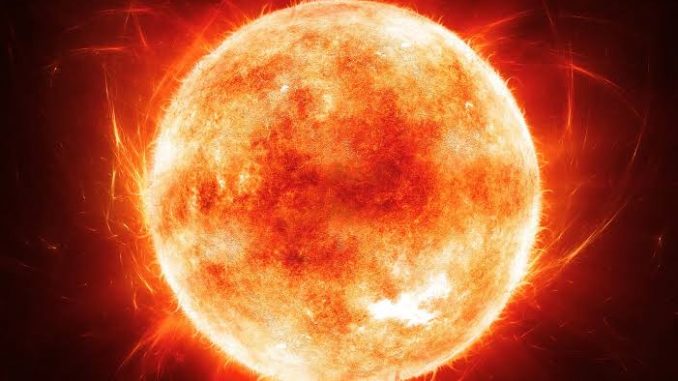
In News
Researchers along with an Indian scientist from the Indian Institute of Astrophysics have solved the sun conundrum that has puzzled solar physicists for a long time.
In-Detail
- The temperature of the sun at its core is 15 million degrees Celsius.
- At the surface layer called the photosphere, it is merely 5,700 degrees C.
- While it is natural to expect from any heating body without an external source to heat it, the temperature tends to decrease as it goes outside.
- But, the sun’s atmosphere, known as the Corona has a higher temperature than the photosphere.
- From outward of photosphere temperature increases to one million degrees C or more in the Corona. This stretches to over a million kilometres.
- This conundrum has puzzled solar physicists.
Spicules
- The Sun has many geyser-like jets known as Spicules.
- These appear as hairs in a photograph, but these are 200-400 km wide and rise to a height of about 5000km above the solar surface.
- These spicules are key to answering the puzzle.
- Researchers have suspected that these spicules act as conduits for heat and energy to get transferred from the lower atmosphere, bypassing the photosphere and reaching the upper atmosphere.
- The current research shows how these Spicules are formed and act as conduits through which hot plasma is transferred to the Corona.
- As per the researchers, the observations revealed that the hot plasma heats up these spicules making them attain Coronal temperature.
- The hot plasma consists of a mixture of negative and positive ions that are electrically charged.
- They further found that the plasma emits extreme ultraviolet light and the coronal intensity increases as the spicule propagates upwards.
- 1.6-metre Goode Solar Telescope at the Big Bear Solar Observatory (BBSO), the world’s largest solar telescope, was used for making the observations.
- The researchers matched these observations with the Atmospheric Imaging Assembly in NASA’s Solar Dynamic Observatory spacecraft.
Key Findings
- The burst of spicules originates from a web-like network of magnetic structures on the surface of the Sun.
- At the footprints of the spicules, magnetic elements with opposite polarity to the magnetic network emerges.
- Researchers also observed that opposing polarity cancels out on meeting each other, at the exact same time spicules that heat up the upper atmosphere appeared.

Leave a Reply
You must be logged in to post a comment.